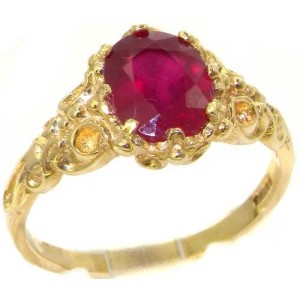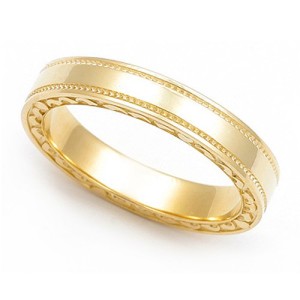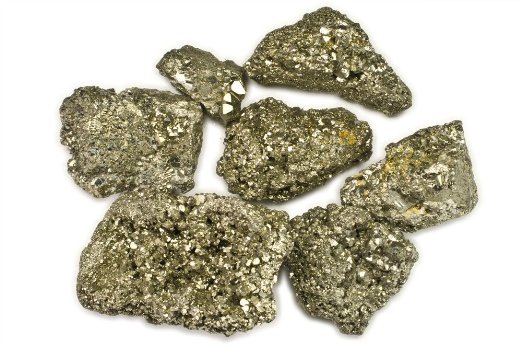What Is 9K Gold?
9-karat gold contains 9 parts pure gold and 15 parts additional metals such as silver, tin, nickel, zinc, palladium, etc.
Calculated as a percentage, the purity of a 9K alloy is 37.5% – this is the proportion of pure gold it contains.
The Content of 18K Gold
18-karat gold contains 18 parts pure gold per 24 parts alloy in total. Therefore, its gold purity is 75%.
Because of its relatively high purity and good durability, 18K gold is one of the most popular alloys used in jewelry.
How Are 9K and 18K Gold Different?
As we already saw earlier, 9-karat and 18-karat gold differ greatly in terms of purity.
The other most important differences, which stem from the difference in purity, are in the price, durability, and color of 9K and 18K pieces, as well as in whether they are actually considered gold.
Gold Status: 9 Karats Is Not Always Considered Gold!
Perhaps one of the most important facts you should take note of is that while an 18K alloy is considered gold, this is not always the case with a 9K alloy, depending on the country it is sold in.
For example, in the United States, 9-karat jewelry cannot be sold as gold. In order for an alloy to be considered gold in the U.S., it has to have a purity level of at least 10 karats.
Price and Affordability
The difference in purity between 9K and 18K gold also leads to a difference in price. Since 9-karat jewelry contains less gold, it is cheaper per gram.
18K gold is significantly more expensive, as it contains twice as much pure gold as a 9K alloy, percentage-wise.
Durability and Hardness
Gold is alloyed with other metals because it is very soft. You can expect lower-karat alloys to be harder than higher-karat ones because of the difference in their gold content.
As a low-purity gold alloy, 9K gold is harder than 18K gold. This means that a piece made of 18K gold will be relatively easier to scratch, and its parts will bend more easily.
9K jewelry, on the other hand, will take longer to wear out due to its greater hardness.
The above-mentioned principle might not always be valid, however, as the hardness and durability of an alloy depend on the types of metals that make it up as well as their proportions. So, in some cases, it is possible for a 9K alloy to be actually softer than an 18K alloy.
Tip: If you’re looking to buy a diamond and have it set in gold, check out James Allen’s 18K gold settings as well as the loose diamond offered.
Color
Alloys with a higher gold content will have a color that is more saturated and yellow. In contrast, lower-karat alloys will look paler in comparison.
Compared with 9K pieces, 18K jewelry tends to have a richer color. So, if you are looking for a ring or bracelet that looks more like pure gold, 18 karats is the way to go.
9K jewelry is a recommended choice only if you don’t care much about color and if you put greater importance on price and affordability.
Where to Buy Gold Jewelry?
For jewelry with diamonds, emeralds, rubies, or sapphires, we recommend James Allen (read review) because it allows you to take a 360-degree look at any stone before having it set in gold.
Blue Nile is another reputable diamond retailer we recommend.
















